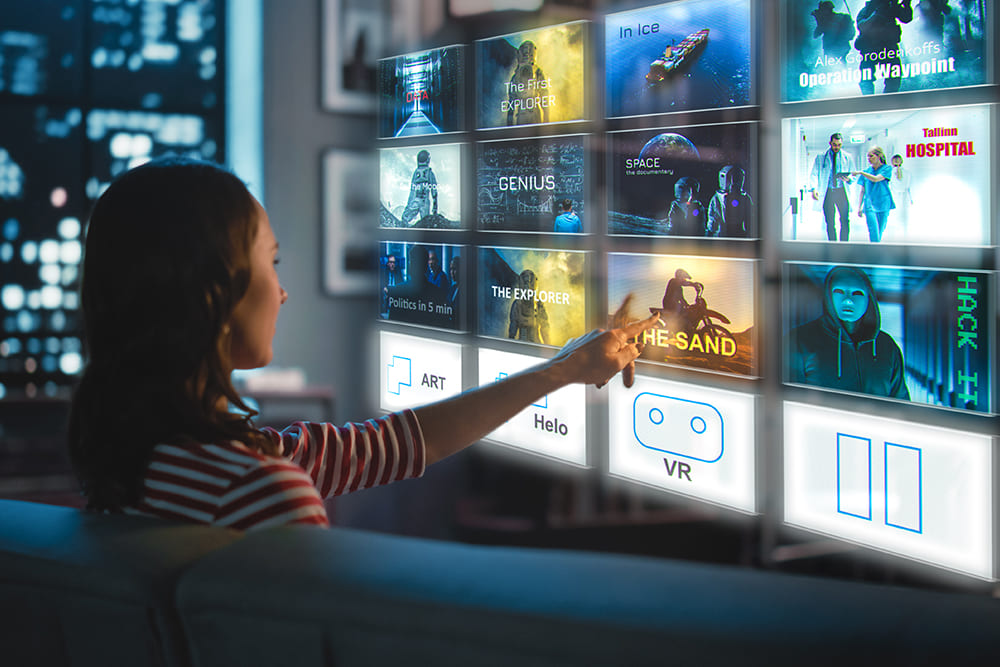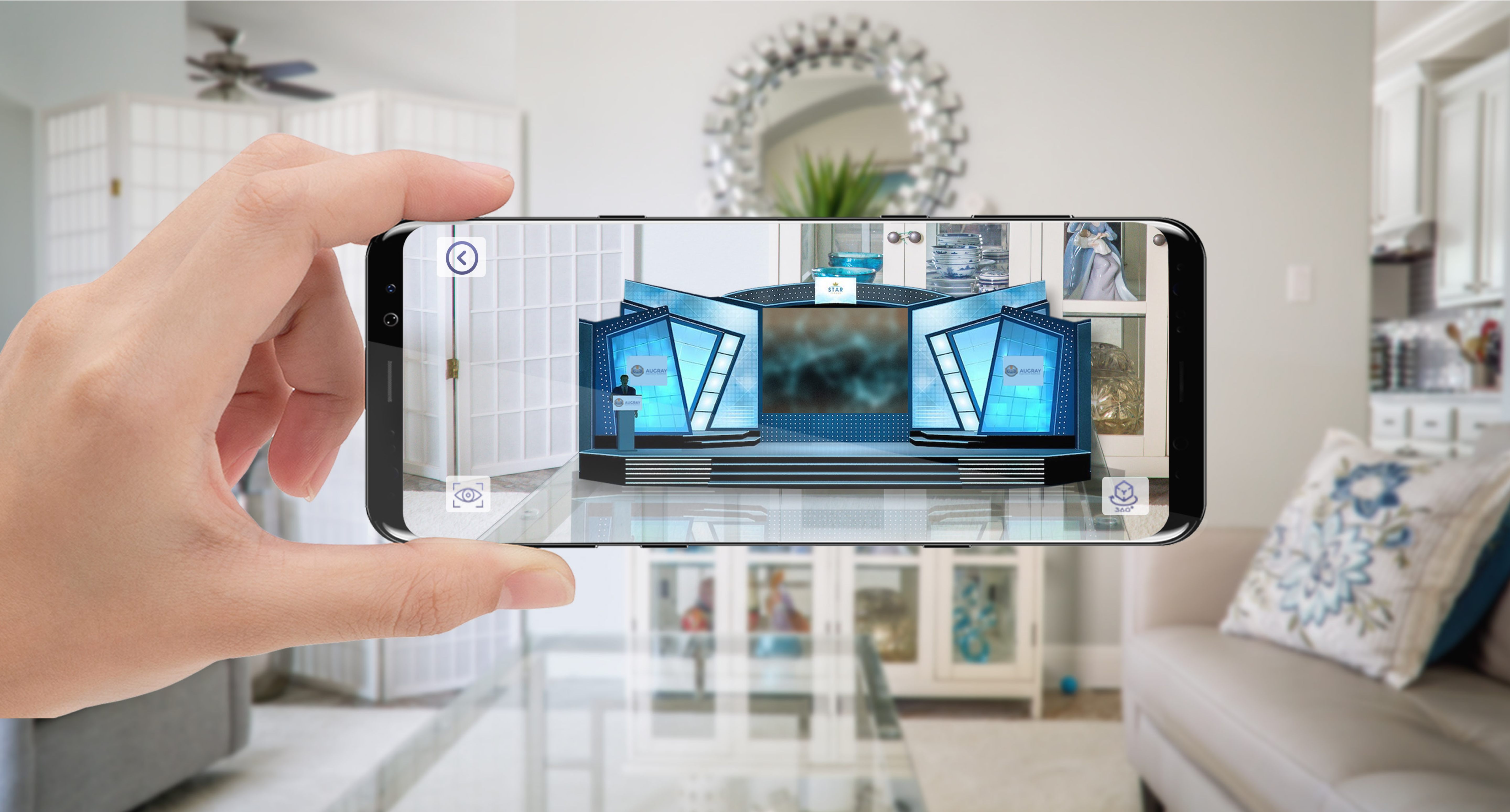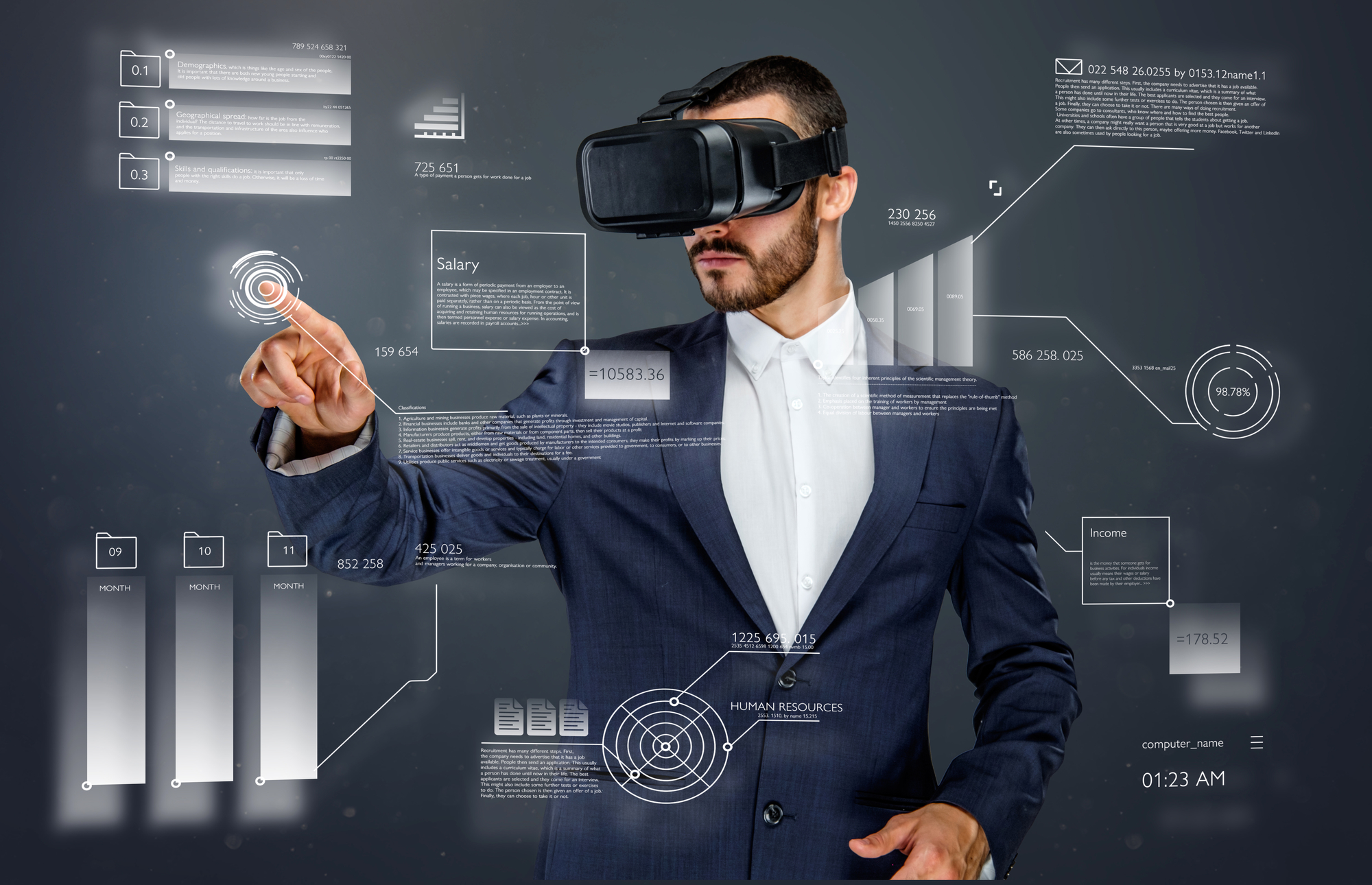Augmented Reality In Entertainment - Definition And The Roles It Plays
Augmented reality in entertainment brings together two exciting worlds: digital technology and the fun of entertainment. But what exactly is augmented reality, and how does it spice up our favorite forms of entertainment?
Author:Elisa MuellerReviewer:James PierceMar 08, 20249.1K Shares123.2K Views

Augmented reality in entertainmentbrings together two exciting worlds: digital technology and the fun of entertainment. But what exactly is augmented reality, and how does it spice up our favorite forms of entertainment? Let's explore the definition of augmented reality and the various roles it plays in enhancing our entertainment experiences.
What Is Augmented Reality?
Augmented reality (AR) is a technology enabling users to overlay digital information and graphics onto the real world. This can be achieved through various mediums, such as smartphone apps, specialized AR devices, or head-mounted displays. A defining aspect of AR is its ability to facilitate natural and intuitive interaction with digital content.
For instance, users can employ their smartphones to point at physical objects, prompting AR apps to display additional information about them on-screen. AR technology finds diverse applications across entertainment, education, and industry. Within entertainment, AR holds the potential to enrich live events, movies, and video games by seamlessly integrating digital elements into the physical environment.
In education, AR can revolutionize learning experiences through interactive lessons and simulations. Moreover, in industry settings, AR can serve tasks like providing maintenance guidance to technicians or offering virtual training simulations.
The Role Of AR In The Entertainment Industry
The entertainment industry stands as one of the early adopters of augmented reality (AR) technology, holding the promise of transforming our encounters with movies, live events, and video games. Live events, in particular, offer an exciting canvas for AR applications. Concerts, plays, and other performances can be elevated by incorporating digital elements into the physical space.
For instance, an AR app might project song lyrics in real timej9iiiiiiiiii909 or introduce visual effects that enhance the on-stage performance. Interactive experiences for event attendees are also made possible, allowing them to capture photos alongside virtual renditions of their favorite performers.
In the realm of film and television, AR holds the potential to revolutionize viewing experiences, making them more immersive and interactive. Movie theaters could utilize AR to project special effects onto surrounding walls and ceilings or empower audience members to choose personalized camera angles during a film.
Video games, a thriving domain within entertainment, present another frontier where AR could exert significant influence. Imagine playing a first-person shooter game and having enemy positions and crucial information seamlessly displayed within your field of vision.
AR could also play a crucial role in developing more realistic training simulations, especially for military personnel and first responders. The integration of AR technology in these diverse entertainment avenues opens up new dimensions for audience engagement and experience.
Use Case Of AR In The Entertainment Industry
Augmented reality (AR) presents a myriad of opportunities within the entertainment industry, extending beyond concerts, theaters, movies, and video games. Here are additional examples illustrating its potential:
Music Festivals And Concerts
AR can enrich music festivals and concerts by seamlessly integrating digital elements into the live experience. Attendees could use AR apps to view song lyrics in real time or enjoy enhanced visual effects synchronized with the performance. Moreover, interactive features could allow fans to capture photos alongside virtual renditions of their favorite artists.
Theater Performances
In theater productions, AR can elevate storytelling by augmenting the physical environment with digital enhancements. For instance, AR apps could showcase dynamic set designs or provide supplementary information about characters and plotlines, enriching the audience's understanding and engagement with the performance.
Movie Viewing Experiences
Movie theaters can leverage AR to revolutionize the cinematic experience. By projecting digital special effects onto theater walls and ceilings, AR enhances immersion and captivates audiences. Additionally, empowering viewers to personalize their viewing angles during a film introduces a new level of interactivity and engagement.
Home Entertainment
AR extends its reach to home viewing experiences, offering viewers innovative ways to interact with movies. Viewers could use AR technology to engage with films in unprecedented ways, such as interacting with characters or manipulating elements of the narrative, enhancing overall immersion and enjoyment.
Interactive Gaming
AR gaming experiences transcend traditional boundaries by blending digital elements with the physical world. Players can immerse themselves in games that overlay digital information onto their surroundings, such as enemy positions or virtual power-ups. Furthermore, AR facilitates the creation of lifelike training simulations for military and emergency response training, enhancing realism and effectiveness.
Future Of AR In The Entertainment Industry
The outlook for augmented reality (AR) in the entertainment sector appears promising, poised to redefine how we engage with movies, live events, and video games. Here are several potential avenues through which AR could revolutionize entertainment:
- Live events like concerts and theater performances could become more immersive and interactive with AR. Attendees might use AR apps to select camera angles or interact with virtual renditions of their favorite artists, enhancing their experience.
- AR has the potential to transform how we watch movies and TV shows, offering viewers more immersive and interactive viewing experiences. There's the possibility of a convergence between AR and VR, enabling users to delve into fully immersive virtual worlds while still being aware of their physical surroundings, paving the way for entirely new forms of entertainment.
- As AR technology advances, we can expect a surge in interactive entertainment experiences. Picture AR games that require players to physically move and interact with their environment to progress, delivering more dynamic and engaging gameplay.
- With improvements in AR technology, entertainment experiences are poised to become even more immersive. Imagine watching an AR movie where viewers feel like active participants in the storyline or playing an AR game that transports them to a hyper-realistic virtual realm.
In essence, the future of AR in entertainment holds tremendous promise, offering the potential for unparalleled experiences that seamlessly blend the digital and physical realms. As technology continues to evolve, we anticipate witnessing a wealth of innovative AR applications in entertainment in the years to come.
Role Of AR In Other Sectors
Augmented reality (AR) technology boasts a multitude of potential applications. Here are a few examples, though it's important to note that these represent only a fraction of the possibilities, as AR's evolution continues to unlock innovative uses.
- Education - AR can revolutionize learning with interactive and immersive experiences. Students could explore virtual museums or engage in interactive lessons across various subjects. Additionally, AR could simulate scenarios for training purposes, such as surgical procedures or emergency response training.
- Industry -In the industrial sector, AR offers valuable support. It can provide technicians with maintenance and repair instructions, create virtual training simulations, and assist with tasks like assembly line work or warehouse management.
- Retail -AR can transform shopping experiences by offering interactive features. Customers could preview furniture in their homes before purchase or receive detailed product information and recommendations while shopping.
- Healthcare -AR holds promise in medical settings by guiding procedures in real-time, creating interactive patient education materials, and facilitating virtual therapy sessions.
- Military and first responder training -For military and first responders, AR enables realistic training simulations, allowing for practice in various scenarios within a safe environment.
- Transportation -AR aids navigation by displaying directions and points of interest on vehicle windshields. It also provides real-time traffic updates and alerts about potential hazards.
- Sports -AR enhances the sports viewing experience by displaying player stats or instant replays on mobile devices. It can also offer interactive features like virtual meet-and-greets with players.
- Advertising -In advertising, AR creates immersive experiences. For instance, billboards could use AR to showcase additional information or interactive content through smartphone apps.
- Art -AR enriches art experiences through interactive installations and enhancements to traditional artworks. Users could visualize paintings with different frames or backgrounds and access additional information about the artist or artwork.
- Tourism - AR elevates tourism experiences by providing insights into landmarks and points of interest. For example, users could access historical or cultural information about a monument through a smartphone app.
Augmented Reality In Entertainment - FAQ
How Is Augmented Reality Used In Television?
Broadcasters are also using AR to educate and show people about public dangers, such as floods or ice storms – and since AR enables creators to paint a picture of what the impact will be, audiences are more switched on to this content.
How Is AR Used In The Film Industry?
Cinematography in the CloudVirtual production uses digital sets and environments, while AR overlays digital data onto real-world views. Using cutting-edge mobile devices, filmmakers can use AR in real time, creating a variety of opportunities for audience engagement and immersive experiences.
How Is AR Used In Social Media?
Social media AR applications include photo filters, games, ads, and product try-ons. You can access these applications through native features of social media platforms or third-party apps.
Conclusion
Augmented reality in entertainment opens doors to a world where imagination meets reality. Whether it's immersing ourselves in interactive movies, engaging in virtual concerts, or experiencing thrilling video games, augmented reality adds a new layer of excitement to our entertainment ventures. As technology continues to advance, we can expect even more innovative applications of augmented reality, making our entertainment experiences richer, more immersive, and more memorable than ever before.

Elisa Mueller
Author

James Pierce
Reviewer
Latest Articles
Popular Articles

